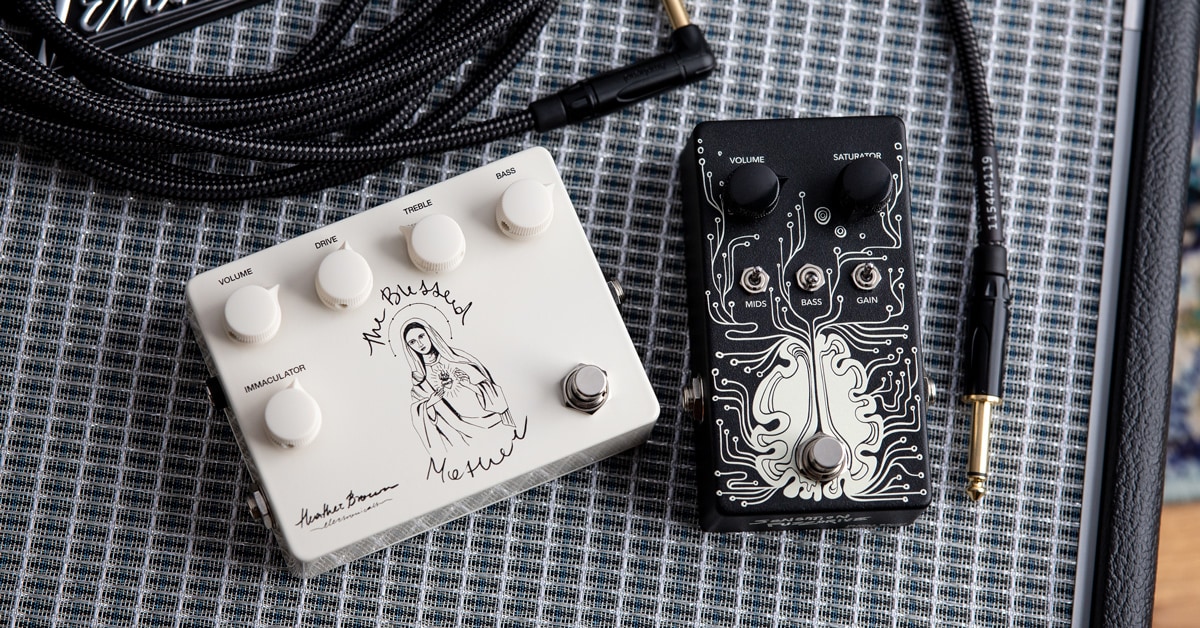It’s not unusual for guitarists to fall in love with effects pedals. Some of them even go a little further and may buy a “build your own“ pedal kit or two. It’s the exception who goes beyond that, shifting from building somebody else’s circuit designs to designing and building their own. Heather Brown is one of that rare breed whose enthusiasm and interest led her first to work for two of the most iconic pedal builders, then branch out to begin her own company, Heather Brown Electronicals. Her debut pedal, The Blessed Mother overdrive, has been a resounding sonic success, and the follow-up, the Sensation Fuzzdrive, has been turning heads and ears as well. A self-taught electronics designer, Brown got her skills the old-fashioned way: By watching, listening and asking the right questions. In our conversation with her, she touched on being a guitar player, learning from the masters and refining her vision of what a great pedal should bring to the table, or pedalboard, as it were.
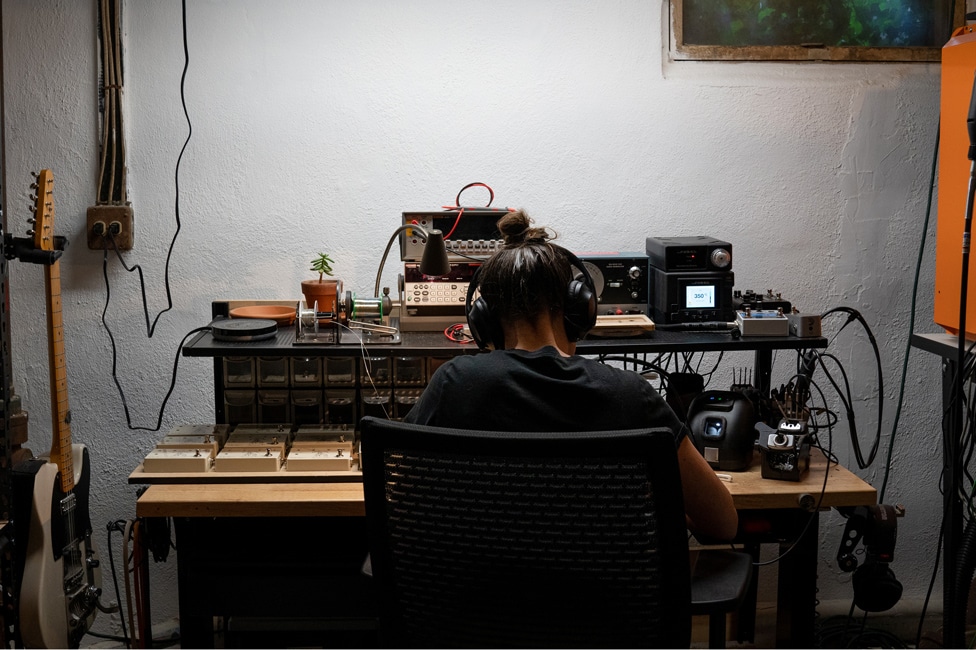
So, what sparked your interest in guitar pedal design?
Heather Brown: Growing up, we had instruments everywhere. It’s hard to remember a time I wasn’t banging on a piano or strumming a guitar. The first time I ever saw the guts of a vintage pedal is probably what did it. By then, I was already obsessed with pedals, playing live and recording. After a while, I started filling my board with these little knickknack pedals I’d make. I think most guitarists can relate. Every time you think you have your rig exactly how you want it, you change your mind. It’s endless fun. There weren't a whole lot of options like there are now for signal routing—things like that.
Did you have a background in electronics before you started building pedals?
I don’t have a formal background in electronics. I got into it as a kid, taking apart radios and other electronics to see how things worked. I never really stopped doing that. My interest in guitar effects kind of just emerged naturally from that as I got older and started playing electric guitar.
You’ve worked with and learned from two of the biggest names in guitar effects: Mike Matthews of Electro-Harmonix, and Robert Keeley of Keeley Electronics. Can you tell us a little bit about each experience?
Yeah, let’s start with Keeley. I got hired there when I was 20. It was a great bunch of folks—lots of memorable experiences. Rob took a chance on me and was very kind. I just remember right away loving to learn each step in the modding and pedal-making process. When it came to production, I can’t explain it; I was like a machine. I’d just get absorbed and do a crazy amount of output, day after day. The thing Rob really instilled in me was the importance of a quality build. It haunted me at first, because I was scared to mess something up. But, that’s a value that really stuck with me and is a crucial part of my business today.
On breaks at Keeley, I would hound the guys with questions every chance I got. Just simple stuff like, “How does this switch work? How do you draw this in a schematic? What does this part do?” Eventually, it all started clicking, and I could do more on my own. That’s when I started littering my board with whatever I dreamed up. Lunch breaks just turned into designated time for my own projects—it was always a race against the clock.
My experience at Electro-Harmonix is kind of hard to explain. I think some of the people there would have a hard time explaining it, too. We were always wondering, “What is it I actually do?” Once, I heard Mike call me the “Production Warehouse Manager.” That was news to me, but we’ll go with that. It was timely, though. I left Keeley because business had hit a little bit of a rough patch, and I wanted to stay in the industry. So, I reached out to Mike. It was sort of a “Why not?” kind of moment. I guessed his email address and sent him my resume. I couldn’t believe he hit me back! He flew me out for an interview, and it all worked out. He brought me on without a clear role in mind, so I ended up doing a little bit of everything—except sales—I hated sales. Looking back, it was such an invaluable experience for me. It was watching Mike every day that taught me how to run a guitar pedal business.
It was such a fun place to work. I just loved being in the warehouse. The vibe there was wonderful. The people are so fun, and the music gets loud on Friday afternoons. You could skateboard on break, or practice songs in a corner somewhere. Mike doesn’t know it, but we kept a hammock in one of the bays for a couple of years. From the day I met him, Mike always looked out for me, and I’ll always be grateful for my time there. He tried to help me find my place at EHX, encouraged my music and really showed me the ropes. To this day, I consider him something like an uncle. Mike is family to me. I try to stop in every now and again just to check up on him.
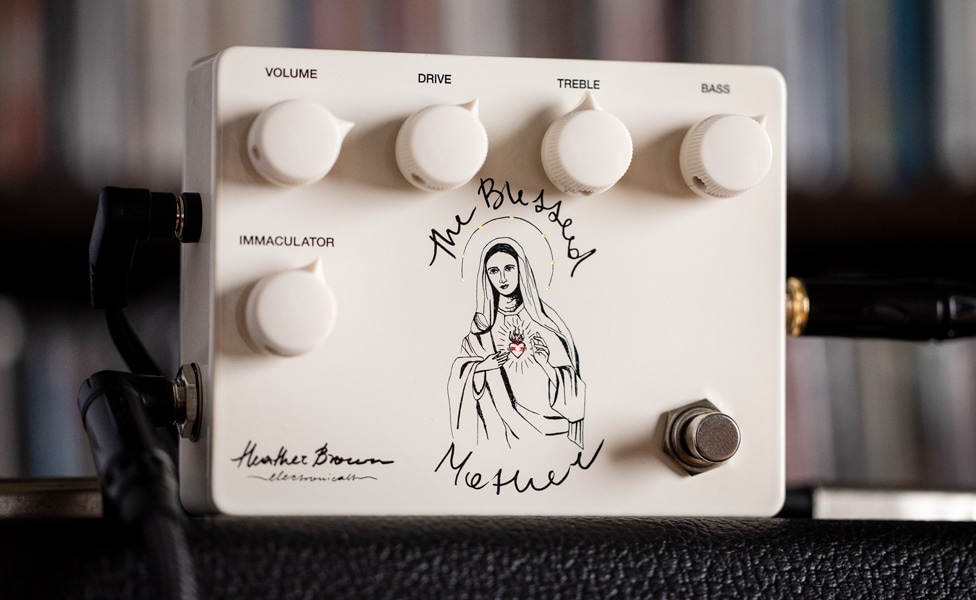
How did these experiences carry over into your own pedals?
I always felt that between the two, I was exposed to a well-rounded world of approaches. I saw what worked, I saw what I thought didn’t. I just kept it all logged away. From Rob I learned quality, simplicity, delegating and valuing input from players. Mike taught me to be bold and innovative, to make production efficient, to be hands-on/obsessive and to collaborate where I can.
What drove you to go out on your own in the pedal world?
When I threw The Blessed Mother out there, I really didn’t expect much of anything—I just didn’t want to lose this part of me. It was another “Why not?” moment. My tools had been sitting in boxes for a while, and I had been trying new things. I was unsatisfied and decided to just turn back to what I knew and loved. A lot of that had to do with becoming a mom. You kind of ask yourself who you are a lot, and think about who you will be to your kids. That’s a big part of this for me—it’s something I really love that I get to share with my kids and other people, too. I never really thought I could do anything like this on my own. But I’ve had a ton of help from a lot of great people and am so glad I decided to take the risk.
What do you think you can uniquely bring with your pedals?
I would like to think I have a good balance with pedal making. My experiences have given me an affinity for classic sounds, but that’s just a springboard for me. I’m excited to explore new things and love how crazy fun some of these effects are getting. I also think there can be some barriers to newcomers in the world of effects pedals. It can be pretty intimidating figuring out where to start, so I really try to create pedals that are easy to understand and excite newcomers, along with gearheads. I think that’s what I’ve come to like a lot about The Blessed Mother. It’s just a great workhorse of an overdrive that can be both an excellent first pedal to get started and can really hold down a seasoned player’s setup. It’s really versatile. I hope to keep that same spirit in all my designs.
I think where I have a leg up is my scrutiny of new designs. It’s sort of obsessive, but the grueling process of a live environment is underrated I think. That’s always impacted my approach. You need perspectives from all types of musicians in all types of environments. It can’t all come from the design room.
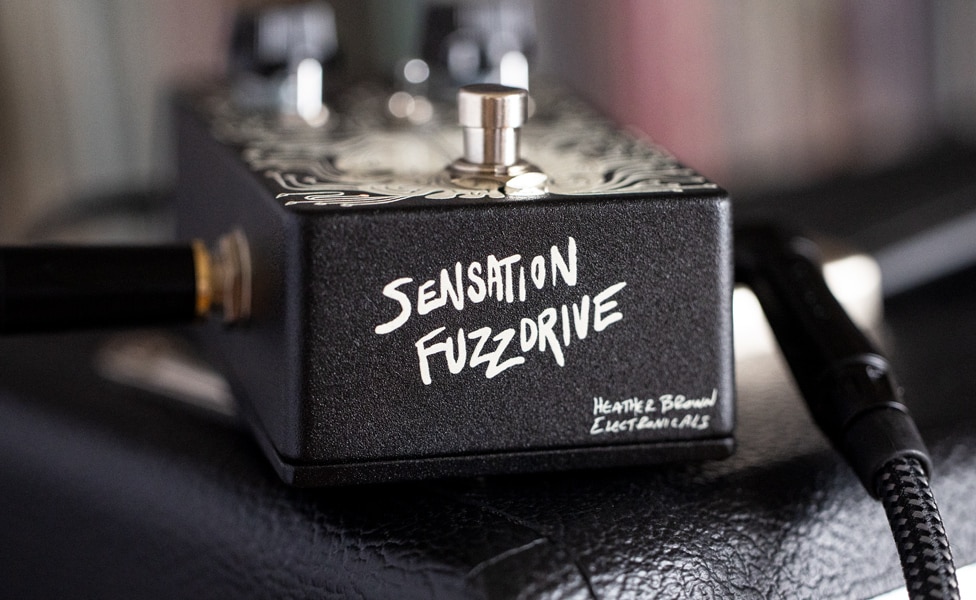
You currently build two pedals, The Blessed Mother, which you just mentioned, and The Sensation Fuzzdrive. Let’s start with The Blessed Mother. How’d you settle on the name, and how does that connect to the personality of the pedal itself?
Hmmm… you know, with The Blessed Mother, if I’m being honest, I didn’t expect it to be a thing really. In my own weird way, it was sort of a nod to Mike, it being my first pedal out there in the world. He has this fascination with the idea of there being an afterlife. One of our first times hanging, he told me about a near-death experience he had on his fishing boat. He threw out one of those, “Whoever’s out there, if you’re out there,” Hail Mary-type of prayers, and survived, pretty miraculously actually. Maybe I read too much into it, but I got the sense that that experience was a big part of why he cared so much about his employees, and a real part of his success story. That’s just Mike. Anyways, this sort of stuff became a long-running joke between us, and in the spirit of keeping that alive I guess, adorning a pedal with the Virgin Mary was, for me, a kind of way to pay homage. I knew it would make him smile. I also thought it kind of amusingly highlighted guitar gear obsession pretty well—we all adore our iconic pedals. There are lots of layers to it. It’s mysterious, fun, ironic, for others it’s more meaningful. Personally, I dug the motherhood aspect—I was pregnant at the time I designed it. I try to respect whatever it means to whoever’s using it.
Was it sonically inspired by anything in particular? Certainly, those knobs bring a specific pedal to mind.
Hah! There's no Klon skeleton under the hood. I’ve honestly never played an original one. I can see how the diodes and blend feature could create some overlapping tones. I hear from customers all the time how similar they are, but The Blessed Mother is pretty much the bare bones of a Tube Screamer. That circuit gets tossed around and recycled a lot. Everyone puts their own flavor on it.
The pointer-style Davies knobs are just a classic, no big deal look. That’s me to a T! Unintended, no doubt.
As you were designing The Blessed Mother, did you have a final sound or specific application in mind?
I knew I wanted higher impedance and less compression than a lot of the drive pedals I had been hearing at the time. I wanted a more open sound with enough grit and thump to get my Tele sounding like John Fogerty’s Les Paul, or something like that. I just craved a warm presence while still letting the treble ring through for clarity and an unpredictable decay that was still pleasant. Once I added the clean blend, I sort of felt like, “What more could I want from a light gain pedal?” It sounds wonderful stacked or as a boost as well.
The Blessed Mother gets a lot of love from bass players, too. They like the clean blend. It has a lot of flexibility, depending on what you want from it.
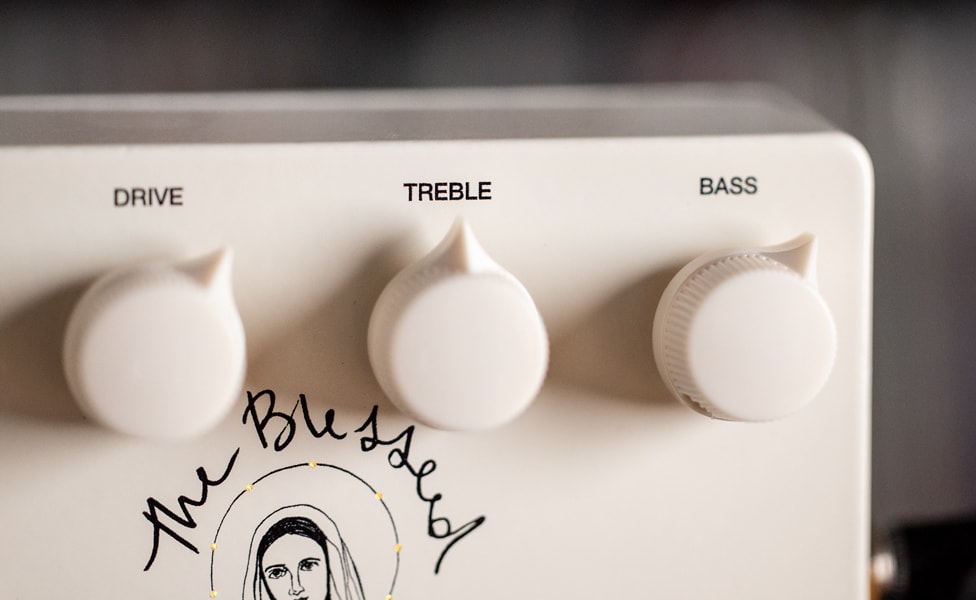
Can you tell us a little bit about how the silicon and germanium diodes each play into the sound?
I use two germanium diodes in series with one silicon diode cutting them off. They’re asymmetrical. The germaniums create this unpredictable tube-like breakup because the forward voltage is pretty low. The silicon diode helps complete the breakup and smooth it out.
You mentioned the clean blend, aka the Immaculator—a feature that isn’t a super common control on OD pedals. What was the impetus?
I just loved it on the [Voodoo Lab] Sparkle Drive, so I wanted it on mine! The interaction between each pot is really dynamic, and there are a few sweet spots that the Immaculator highlights.
Have you considered adding any external expression control for this?
YES! I have something rad in the works with that.
The Blessed Mother supports both 9V and 18V power. What does that additional 9V do to the performance and sound of the pedal?
Honestly, I put that in just to make things a bit more foolproof, so folks don’t accidentally blow up their pedals by plugging it into the wrong power cable. I don’t hear a ton of difference between 9V and 18V, but on your rig, you might.
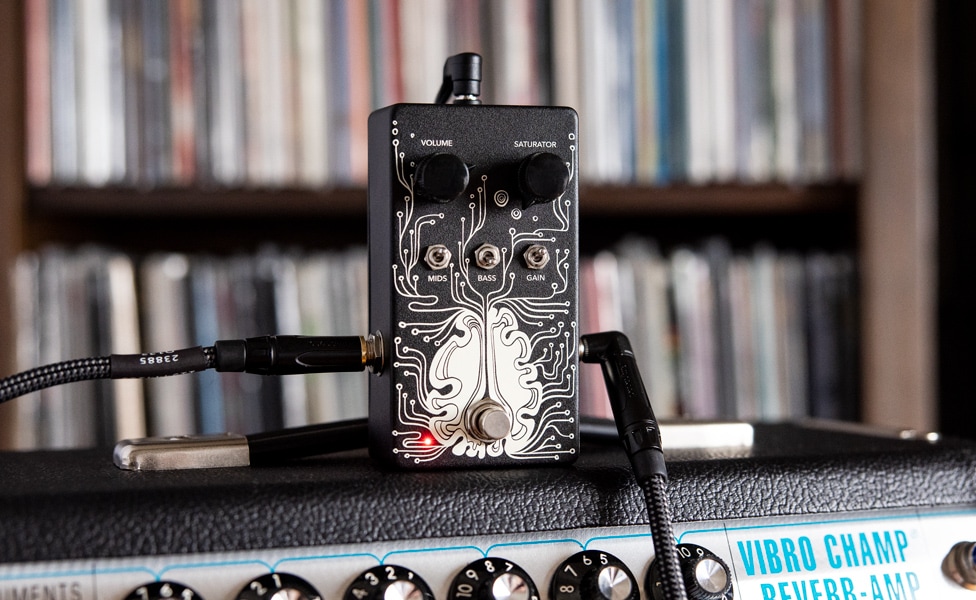
Shifting gears to The Sensation Fuzzdrive, what was the end tone you heard in your head that you were designing towards?
The Sensation Fuzzdrive came out of this fun project I did where I flipped The Blessed Mother’s Immaculator on its head. Instead of a clean blend, what if it did the opposite? It was a limited release called The Blessed Mother Fuzz Assumption, where the clean blend was replaced with a gnarly fuzz circuit that went from zero to sounding like your amp is broken, especially when it was hit with a really strong signal. It was rad, and that gave me the taste for making a dedicated fuzz pedal. I really came to love this sweet spot on The Fuzz Assumption around 1 o’clock between the drive and fuzz. I wanted to home in on that sound specifically and give it a wider range of tone options.
Can you speak to a little bit of what’s going on under the hood that gives that perfect balance of fuzz and OD?
Think of a Big Muff without the blanket over top. Then bias it to be more overdrive-like. It was really hard deciding between all the different gain stages. So, I threw in all three. I liked being able to broaden the range yet limit the tone options within that range to my liking. You’ll be surprised how much ground it covers. For anything in between, you can adjust the tone knob on your guitar. The bass can get pretty boomy and the mids can throw a nice blanket back on top, which to me is very fuzz-like. I actually really like it on the first stage as a light gain as well. But when you throw all the switches up, it gets pretty fun. I think of that as like “full throttle” on the circuit. I’d say the qualities I was searching for were the punchiness and clarity of an overdrive with the warmth and sustain of a fuzz. It lives in the realm of ambiguity and pairs really well with The Blessed Mother. I always put The Sensation Fuzzdrive in front. It can get a bit screwy putting other pedals or buffers before it, and it’s sensitive to the volume and tone of your guitar.
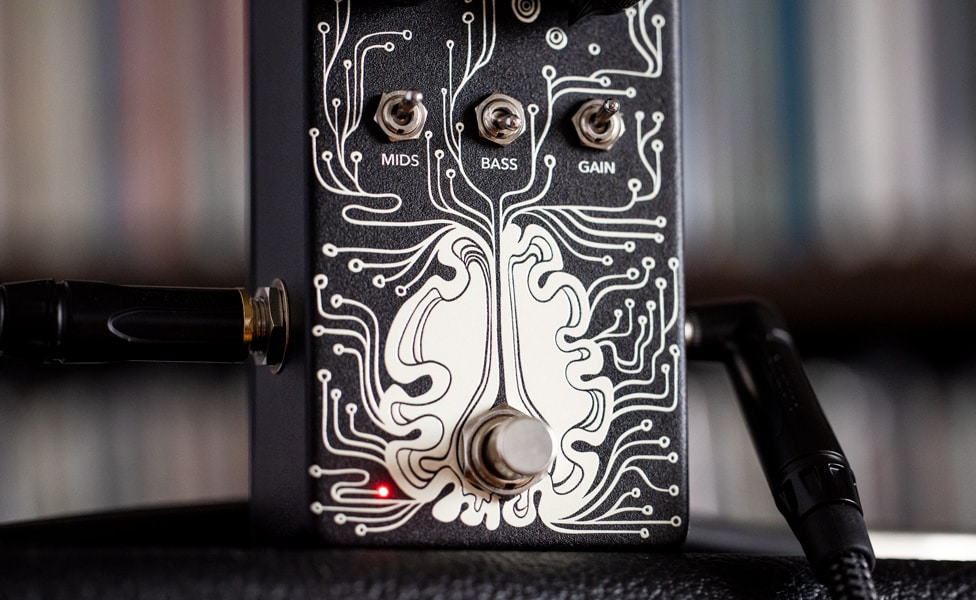
Can you break down how each of the controls shape the sound?
There’s three different gain stages you can cycle through. The more stages you add, the broader and wider the saturation gets. Then there’s a hi/low gain option, three options for mid-presence and another three for bass-presence.
There’s also an internal dip switch that sort of fine-tunes the character of each gain stage. By default, they’re in the off position (down). When you flick them up, an extra resistor is added to the circuit, bringing with it a bit more compression and making that transistor sound more like a thick overdrive. You could think of them as taming the circuit a little.
Each switch impacts the gain stage they’re labeled for, but you have to remember they’re all in series: 3 has to run through 1 and 2 to get there. So, if you dig the sound of the 3rd stage being reined in a little but like the 2nd stage as it is, flipping the 3rd switch up will only alter the sound of the 3rd stage. But whatever you flip on for the 1st or 2nd stage will affect the 3rd stage as well. You get the idea.
While you’ve got mids and lows control on there, you don’t offer any treble tone-shaping. How come?
The treble is already there; with the mid and bass switches down, the signal has a lot of brightness.
Do you have any specific rig or setup that you voice and test your pedals with?
If we’re talking production, I test pedals going out the door in headphones with an amp modeler. It’s the best way to catch potential mistakes. It isn’t the most fun, but it sure is effective. I’ll go back to it fairly often while prototyping new designs. It helps me identify unwanted noise or again, catch mistakes. But usually, the first amp I turn on is this Blues Junior I modded a while back. I figure if I can get it sounding good on that, it’ll sound really good with the next amp I turn on. An absolute must is my Tele. I love the pickup arrangement. I’ve had it so long, it’s just my reference for everything. It’s the only way I know where I’m at.
I have sort of an unofficial focus group as well. Guitar and bass players who have a wide range of styles and gear. I take their feedback really seriously, and they help refine how the circuit ends up. They keep me inspired.
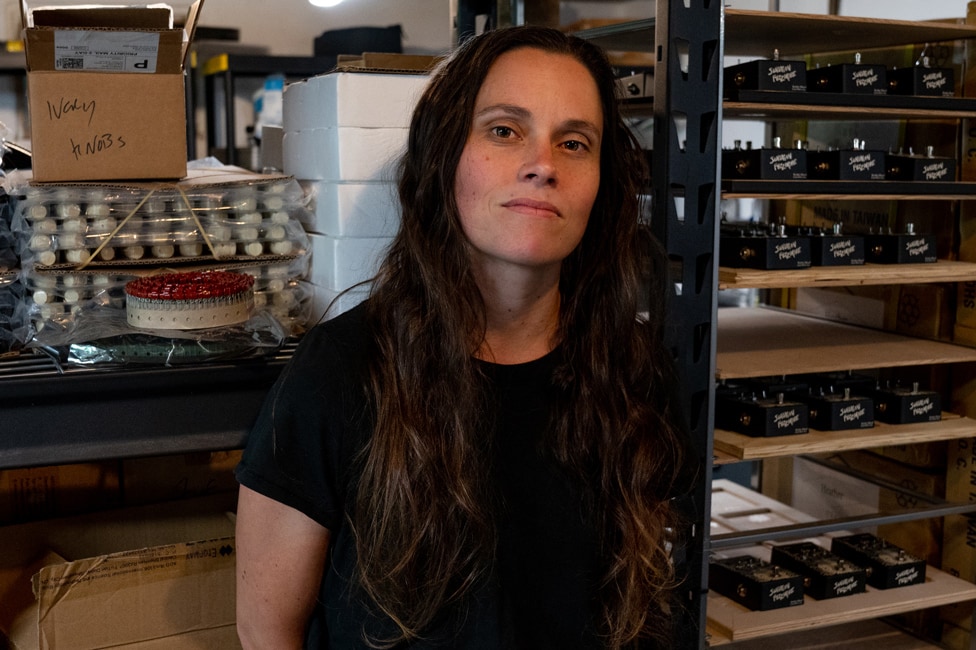
As you’ve seen your pedals out in the wild the past few years, has there been any particular amp and guitar combo that blew you away with either of them?
Last year, I heard a Blessed Mother through a ’60s Black Panel [Fender] Princeton. Blew me away. I think the player had a standard Strat.
So, what can we expect in the future from Heather Brown Electronicals?
I mean it was sort of in my wildest dreams that I’d be able to keep making pedals. There’s more coming! For now, I’ll say I’m really excited to get the stereo version of The Blessed Mother out there soon. It’s been a long time coming.










